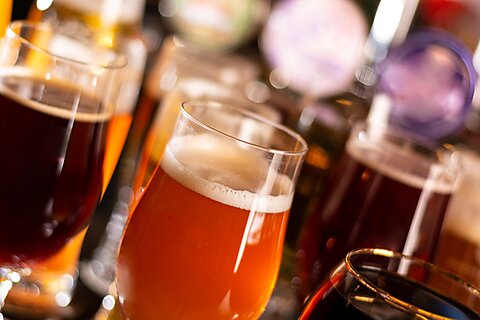
Nearly a Century Later, We Are Still Fighting Alcohol Prohibition
Christian Schneider
Any day is good to raise a cold glass full of spirits, but enjoying a stiff drink on December 5 is especially apt, given it is the day alcohol prohibition was repealed in 1933.
The benefits of ending Prohibition immediately became evident: People stopped poisoning themselves with alcohol mixed with paint thinner in their bathtubs, organized crime lost much of its clout, and breweries once again were able to provide jobs for local workers.
But even today, we are sporadically reminded of the downsides of restricting alcohol consumption. For instance, many colleges still ban the sale of alcohol at their sporting events, leading to some unintended consequences. In a National Review Online column in May of last year, I identified one of these downsides by telling the tale of two football stadiums in the state of Wisconsin:
On November 26 of last year, the Wisconsin Badgers football team played their final game of the season against their hated rivals, the Minnesota Golden Gophers. The game saw 54 people ejected (27 of whom were students), 16 people arrested, and another 16 cited (one for the overly polite-sounding charge of “disposing of human waste”).
Compare that crowd to the one that gathered the previous weekend at Lambeau Field, home of the Green Bay Packers and the mecca of professional drinking in America. Despite the doctoral levels of inebriation among fans watching the Packers defeat the Dallas Cowboys, there were only five arrests and eleven ejections. (If you are designated “the drunk” at a Packers game, you have achieved bacchanalian immortality.)
These are two stadiums, around the same size, in the same state, with the same drinking culture. And yet, according to numbers provided to me by UW-Madison police, more arrests and ejections occur among the Badgers devotees than among the seasoned NFL crowd. When the college team played Washington State, 45 people were ejected, 36 of whom were students. During the game against New Mexico, 66 people were ejected, 24 of whom were students. By contrast, the numbers for Packers games hovered in the single digits—during the final game of the year against the Detroit Lions, there were only four arrests and eight ejections.
These stats may confuse people, considering that alcohol is actually served at Packers games. How is it that a college crowd can be so much more sauced despite the lack of beer flowing at the concession stands?
The answer is simple. Knowing there’ll be no chance to get their hands on a cold one during the game, under-21s pound as much as they can outside the stadium before the game begins. The kids get themselves good and hammered, knowing the buzz is going to have to last three hours.
This is all perfectly evident to anyone who has ever attended a sporting event—if you know you won’t be able to drink while sitting in the stands for the length of a football game, you are going to do one of two things: You’ll either drink as much as humanly possible before the game, or you’ll sneak in hard alcohol somewhere on your person.
In the piece, I point out that at Lambeau Field, home to both a professional football team and stands full of professional drinkers, arrests were a small fraction of what they were at the college stadium down the road in Madison. That isn’t in spite of beer being sold in the stadium, it is because of it.
Before this season, the University of Wisconsin–Madison took my advice and decided to start selling beer during its football games.
“The option to purchase alcohol is common at collegiate athletic venues all over the country and we’re glad that we can now offer it as part of the fan experience at Camp Randall,” said Chancellor Jennifer Mnookin at the time, adding that the plan combined “opportunity with public safety.”
Well, the numbers are in, and they are entirely predictable. This year at Badger football games, beer and wine consumption was up and arrests were down.
From the Milwaukee Journal Sentinel:
According to University of Wisconsin–Madison Police Department interim police chief Brent Plisch, alcohol-related police contacts decreased by about 25%, from 118 incidents in 2021 to 89 incidents this year.
Although it might seem counterintuitive, Plisch said this is a phenomenon across college athletics in general: After allowing alcohol to be served inside the stadiums, universities tend to see a reduction in police contacts for alcohol-related offenses.
Except that it’s not counterintuitive at all. Allowing people the opportunity to drink freely in public teaches them to be more responsible and spread their drinking out rather than getting hammered before the game. The school shouldn’t be taking credit for the drop in arrests; it should be taking the blame for waiting too long to see what was plainly obvious.
So enjoy a pleasant beverage today. And if you do so at a sporting event, even better.
